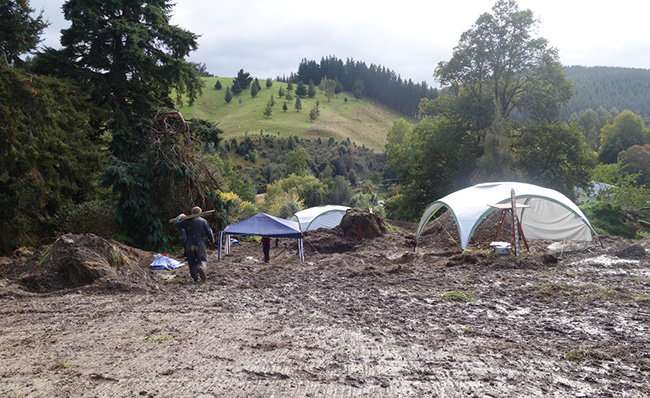Researchers reveal history through exhumation of Otago graves

Exhumation and analysis of skeletons and burial sites in the historic Otago town of Lawrence is underway, with University of Otago researchers conducting The Otago Historic Cemeteries Bioarchaeology Project.
Professor Hallie Buckley, of Otago's Department of Anatomy, and Dr. Peter Petchey, Honorary Research Fellow of the Department of Anthropology and Archaeology and Director of Southern Archaeology, are Co-Directors of the project which focuses on the original Lawrence cemetery that closed in 1867 on Ardrossan Street, along with the Chinese area of the town's more recent Gabriel Street cemetery.
The community-supported project, which involves isotopic and DNA analyses of remains, has already uncovered exciting discoveries.
"In the old cemetery we wanted to establish whether there are still graves present after supposed exhumations occurred when the area was closed. The local legend was that one person was left behind. In the first few days on-site we've confirmed there were at least four other people left behind, and there are at least three other grave cuts present which we are investigating for skeletal remains," Professor Buckley says.
In the new cemetery on Gabriel Street, the team are looking to establish whether there are graves in areas around the Chinese section which likely also includes the graves of other marginalised people.
Further aims of the project include creating a detailed picture of what life was like at the time of the Goldrush (early 1860s). The remains can reveal aspects of people's health, diet, and overall quality of life.
Dr. Petchey says the project provides a rare opportunity to discover new details about members of Otago's gold-rush society.
"We can learn about aspects of their health and wellbeing, the makeup of the population, burial traditions, and compare all of the above with our other research project in Milton," Dr. Petchey says.
The Milton research – the first of its kind in New Zealand – involved similar processes at the St John's Burial Ground, Milton, in 2016.
Both projects have required thorough consultation processes, with respect for the dead of utmost importance. In regard to this recent project in Lawrence, the research team consulted with the Lawrence community through public meetings and media releases, and gained the permission of the Lawrence Community Board and the Clutha District council, local Chinese community leaders, and Otakou Runanga.
An archaeological authority was gained through Heritage New Zealand, and a Disinterment license through the Ministry of Health. Findings from both Milton and Lawrence are expected in coming months.
Comment and background on the project provided by Dr. Matthew Schmidt, Archaeologist Otago/Southland, Heritage New Zealand:
"This cemetery was believed to have had burials moved before it was closed in 1997, but from our experience historic records for cemeteries often don't match what is still there. Heritage New Zealand suspected that burials could still be present at this site so helped facilitate the investigation for the landowner by Peter Petchey and Hallie Buckley.
"This project is incredibly valuable primarily because of the outcome for the people buried here in the 19th century. While important data will be gained on the background of the people such as their sex and age, they can now be moved and re-interred with the respect they deserve. It has been really pleasing that the landowners have worked closely with archaeologists to respect the history of the site and the people associated with it."
Provided by University of Otago



















